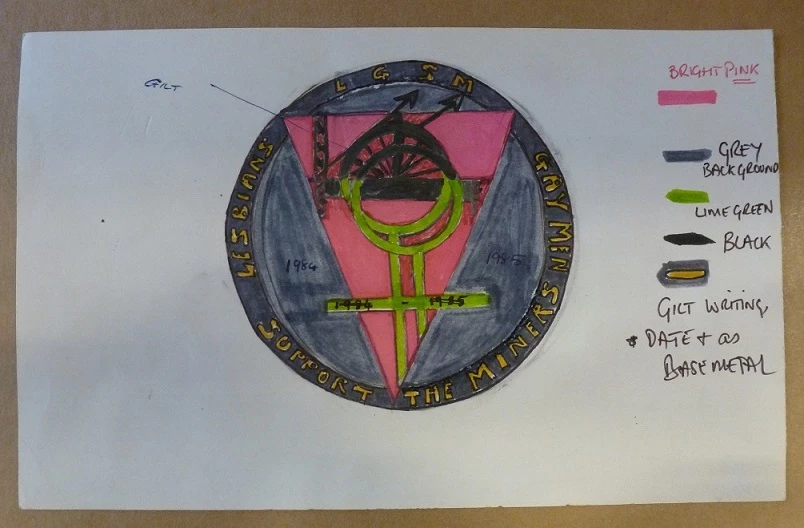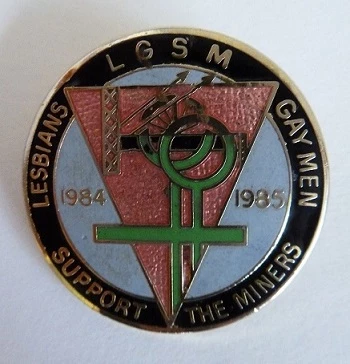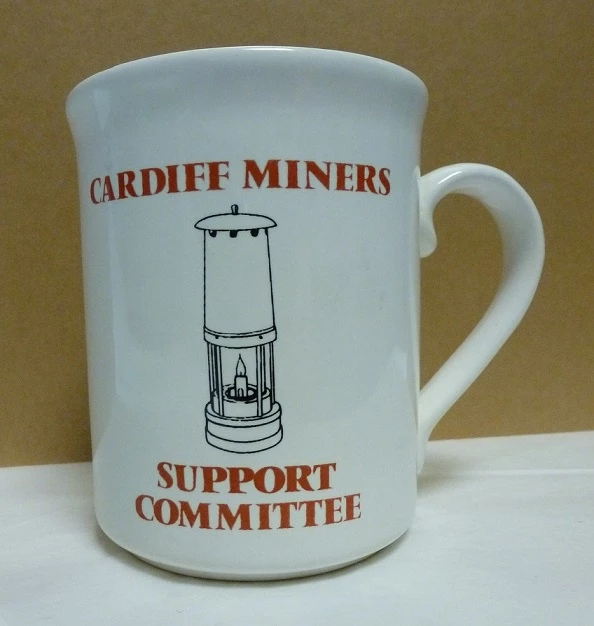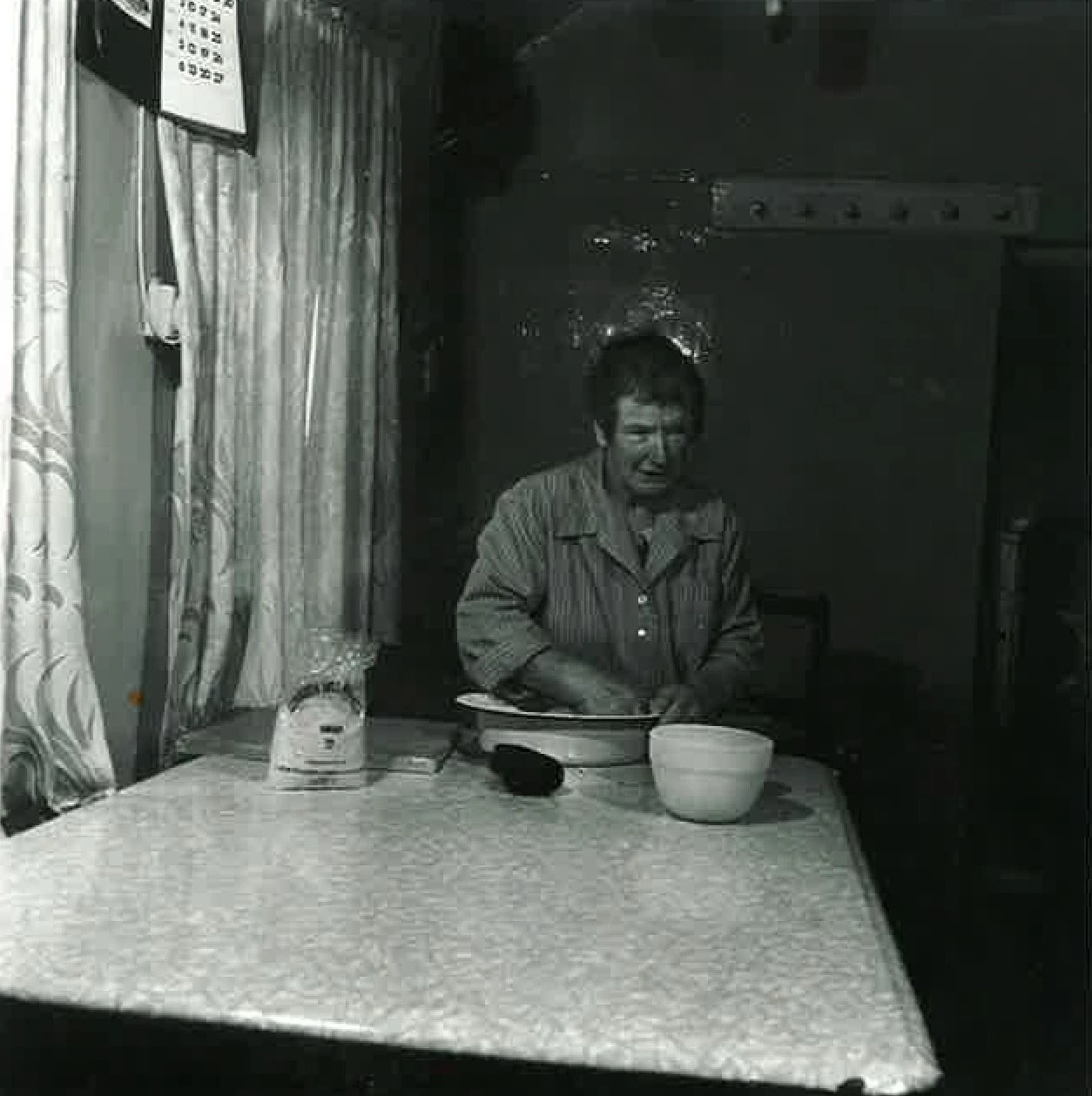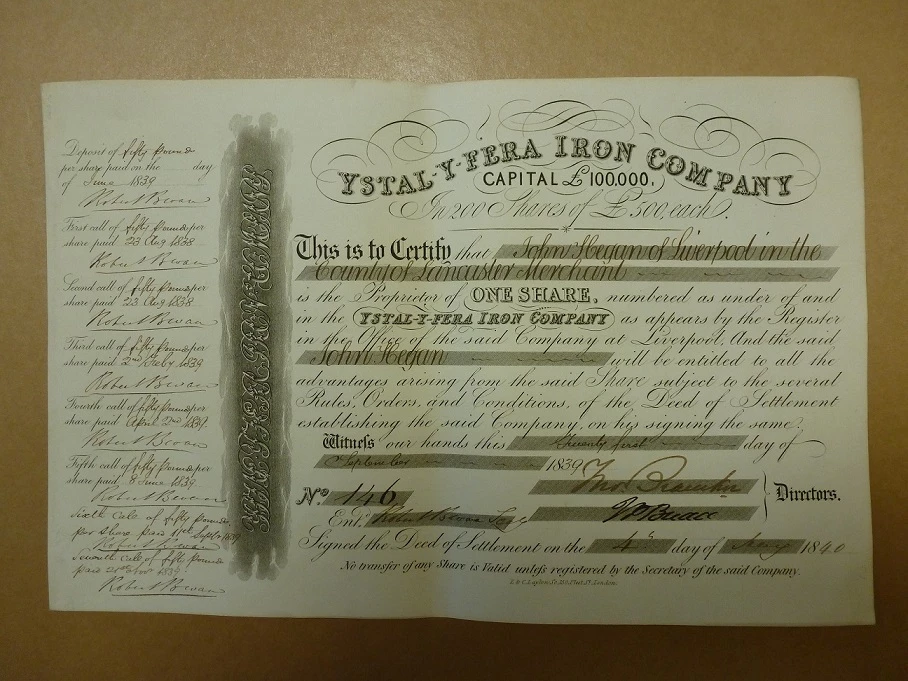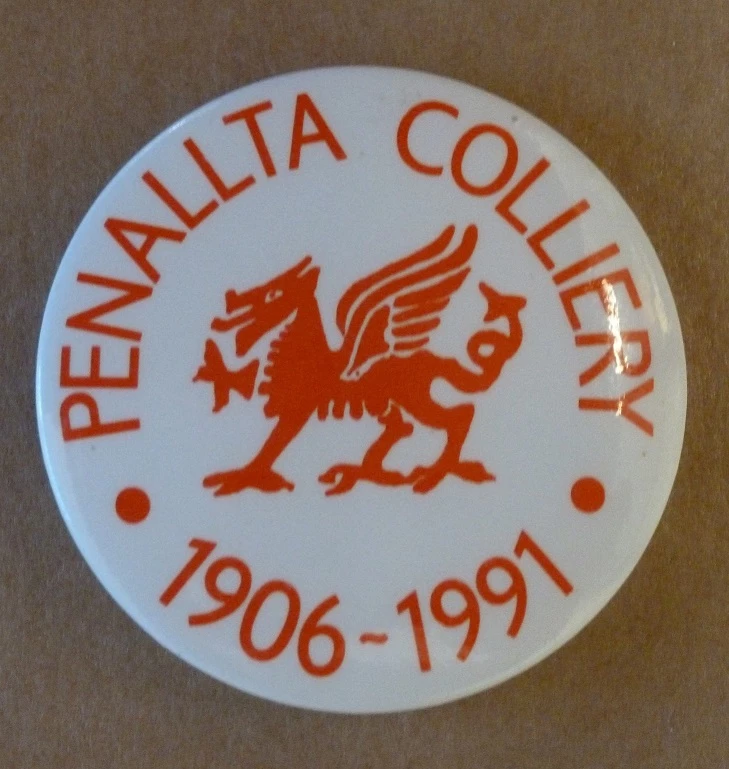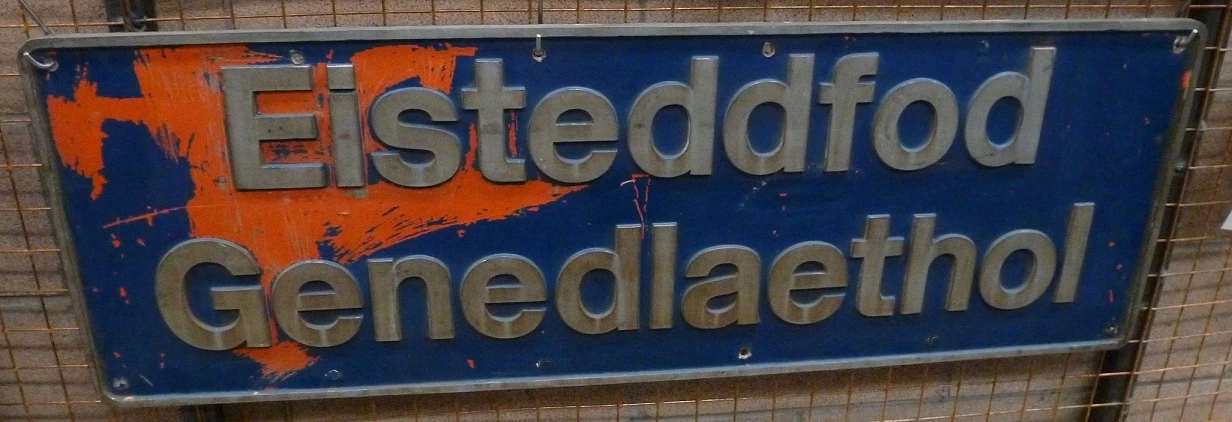A Window into the Industry Collections - March 2016
, 31 Mawrth 2016
The first object this month is this wages book from Roath Power Station. Roath Power Station was owned by the Cardiff City Electricity Department until Nationalisation, when the Central Electricity Generating Board formed. It was situated on a site on the corner of Newport Road and Colchester Avenue, and began supplying electricity in 1902. It was essential in supplying electricity to the new fleet of electric trams that began running in Cardiff from 1902, and a Tram Depot was situated close by on Newport Road. This aerial view from the Tempest Collection shows the site in the 1950s after the construction of the two concrete cooling towers were completed in 1942.
Last year we were donated a copy of the design for the Lesbians & Gay Men Support the Miners Group badge that was produced in 1984. The events from 1984/85 were recently depicted in the film ‘Pride’. We have now been donated two of the original designs for the badge. This complements a number of objects in our collection including a 30th anniversary badge manufactured in 2014.
Also relating to the 1984/85 Miners’ Strike we have been donated this month this ‘Cardiff Miners Support Committee’ mug. It was manufactured by the Welsh Beaker Company in about 1985. It was purchased by the donor at a benefit gig at Cardiff Students Union, whilst a student at Cardiff, to support the miners during the 1984/85 strike.
Finally we need your help to identify this lovely view of a Victorian boating lake. It was taken by the photographer J. Owen of Newtown who had won a prize for his photography at the National Eisteddfod on 1889. The lake is currently unidentified but it has been suggested it might be the lake at Llandrindod Wells, or possibly Lake Mochdre at Newtown. If anyone is able to help confirm the location we would love to hear from you.
Mark Etheridge
Curator: Industry & Transport
Follow us on Twitter - @IndustryACNMW


